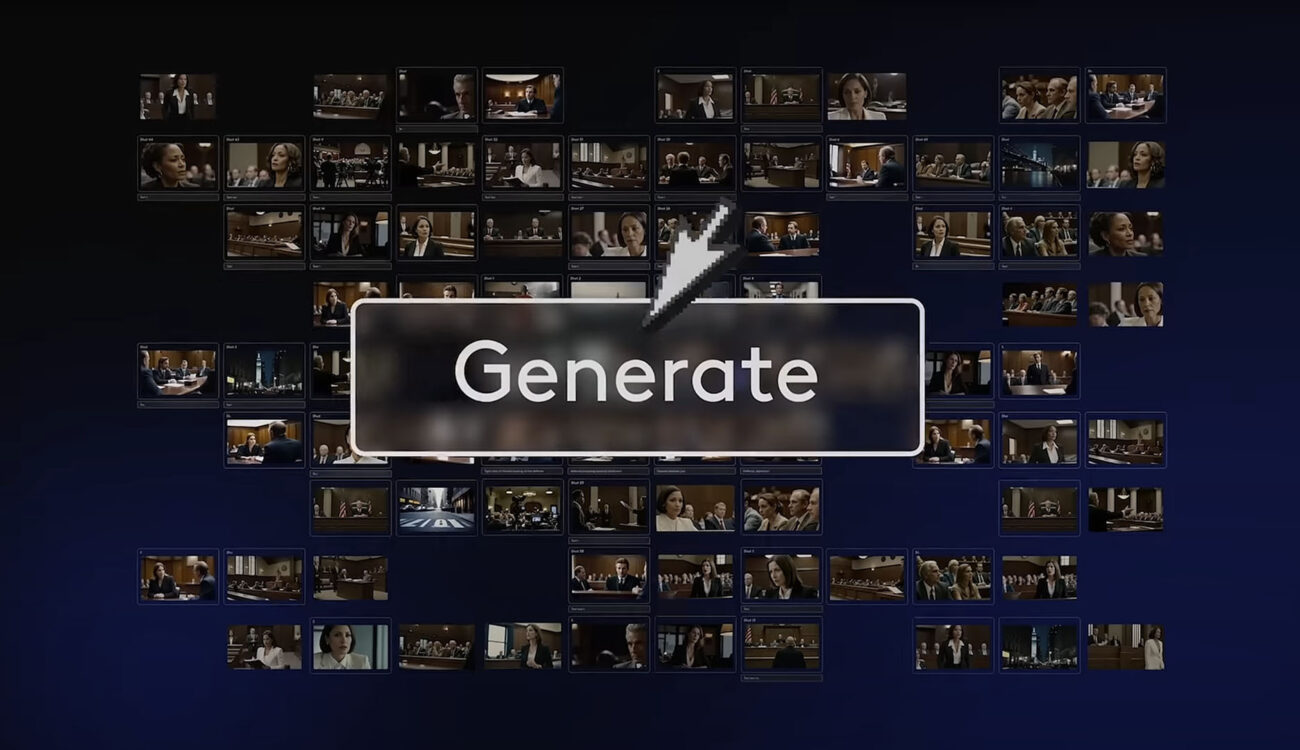
LTX Studio, the first AI-driven storyboarding and prototyping platform, is now open to the public in beta. The unique generative AI app emphasizes consistency and selective control. Made by Lightricks, it’s no surprise to see the unique creative workflow coming from and targeting a creative audience. Unlike other Generative AI video apps, LTX studio isn’t about making the best-looking footage but about supporting the creative process, dubbed “the first AI-driven storyboarding and prototyping platform” for a good reason.
Generative AI is everywhere. The last couple of years saw an exponential rise in the use of LLM (large language models)- based tools capable of creating ever-improving results in ever-expanding fields. There’s even a Gen-AI camera that manipulates the footage as it’s being created. While some AI-based features are mere gimmicks, some hold considerable disruptive potential.
LTX Studio beta – what’s “in the box”?
We’ve thoroughly reviewed the features offered by early versions of LTX studio here and expect everything to move into the public beta. Without getting too deep into it, features include consistent characters, camera angle and motion control, lighting control, and maintaining characters and storyline while changing ambient conditions such as weather, time of the day, etc.
The new beta version also gets some new features:
- Enhanced collaboration: Creative teams can now efficiently supercharge cooperation with live edit views. Similar to several other professional editing suites, LTX Studio opts for a professional workflow that should enable better ideation, storyboarding, and visual prototyping. The company also plans to enhance their collaborative tools roster with commenting and suggestion capabilities.
- Enhanced selective control: LTX Studio already occupies quite a position in terms of selective artistic control, and the new public beta should up its game. Frame Creator lets users craft frames using prompts and scribbles. Keyframe Control, as its name suggests, will generate frames between defined start and end points.
- Character acting and lip-sync: The new LTX Studio beta will sync realistic voices with lip movements for generated characters, allowing users to customize facial gestures and dialogue by referencing real human videos. We will be able to AI-generate speech from text using AI or upload an original voice recording, to which the generated character should sync. Future updates will include voice switching for character dialogue and complete scene editing with dialogue.
While the first two new features seem harmless, it’s the character lip-sync that gives me the shivers. LTX Studio has demonstrated decent face-swapping functionality. Add this to its lip-sync and vocal abilities and multiply by a pivotal election year in a media environment marred by disinformation, misinformation, fakes, ignorance, and outright lies, and a bleak, dystopian future may reveal itself. Though not all is lost, and some innovation may turn the tide, I’m uneasy (to say the least). However, there’s still a way to go for generative video creation.
Fundamentals of Directing
AI-generated video still lags?
Though we have seen some impressive products made by AI video generators, it seems as if there are still some missing links. SORA’s impressive videos occupy the top position as of now but still aren’t publicly available. Those lucky enough to use them report rather long rendering times, and the footage still needs quite some post-production once it’s generated. The level of control, selective manipulation, and consistency isn’t quite there yet (at least, that’s my assumption, reading and watching the products since there are few official transparent reports).
LTX Studio is a different breed
LTX Studio comes from a rather distinctive company. Lightricks prides itself on being a creative-led tech company. The workforce consists of many artists, designers, and creatives, far from the “tech-bro” society stigma associated with such firms. This unique HR blend has led the company to develop some interesting creative tools, such as Facetune, Videoleap, Photoleap, and others.
LTX Studio follows the same design philosophy, putting the creative process as their top priority. LTX Studio isn’t designed to make a finalized prompt-based video. If anything, it’s more closely related to AI-enabled editing software. LTX Studio aims to occupy a specific part of filmmaking rather than making broad promises based on your simple prompts. At this point, the company doesn’t make extravagant claims regarding silver-screen-ready products but opts to supercharge the initial creative process. It does so by streamlining storyboarding, improving ideation, and the ability to pitch your idea with enhanced motion graphics (without having to pay an animator, illustrator, etc).
Who is it for
LTX Studio may cater to the needs of various audiences. The most direct, in my opinion, are writers, creative teams (both commercial and artistic), directors, etc. The tool may also introduce storyboarding to wider audiences who haven’t had the resources to delve into the process. The AI-based simplification of it may bring it to more low-end, low-budget content creators.
A quiet revolution
Moving away from features, abilities, and end results, I believe LTX Studio’s greatest achievement lies in the re-imagination of the generative AI workflow and process. It’s not a technological tour de force; it’s a creative tool designed for creators (rather than for tech presentations) from the ground up. Lightricks still has a lot to prove, and we’ll have to wait, test, and see how LTX Studio performs in the real world, but the potential, for better or worse, is here.
Price and availability
Lightricks offers a tier-based subscription plan. The free trial will get you one computing hour a month.
- $8 per month gets you into the community program with 2.4 discounted computing hours (8640 seconds to be exact)
- $35 per month for the standard plan raises the amount of computing hours to about 8 (28,800 seconds)
- $175 per month puts you into the business tier with 25 computing hours and limited commercial use for targeted audiences of up to 100K
There’s also a custom plan. This will require contacting the company and will open up some lucrative features such as priority support, model customization, multiple users, onboarding and training services, 4K workflow, unlimited commercial use, and more.
So, how do you feel about such a tool? Will it serve your creative process, or is it just a staging point before it tries to take over? Let us know in the comments.






























